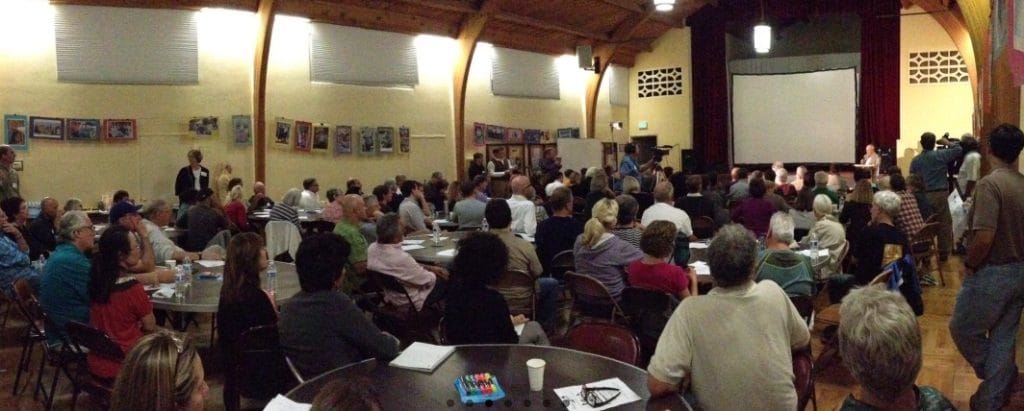
Santa Monica wants YOU to participate in local government.
City Council members voted unanimously Tuesday night to approve an initiative aimed at increasing levels of civic participation, getting a broader spectrum of Santa Monicans involved in the political process, and improving access to government. The new program, which will be headed up by a Civic Engagement Team, will experiment with ways to engage the public over the next two years with a variety of in-person and web-based social and informational events.
“We need to educate people about why we hang out here every other week [for City Council Meetings],” Council Councilmember Kevin McKeown said. “If you live in Santa Monica you have an amazing ability to get involved that you don’t have other places. We have one of the most open city halls in the country.”
However not everyone has the time or the energy to devote to City Council meetings.
“City Council meetings are a main component of Santa Monica’s current civic engagement strategy,” said Matthew Mornick, principal administrative analyst for the City Manager’s office, in the staff report. “In order to provide input on key decisions, individuals wait sometimes two to four hours to address the Council for two minutes.”
Indeed, that was the case at Tuesday’s city council meeting, where the council deliberated for several hours and dozens of citizens spoke and about a proposal to downsize the city’s popular summer Twilight Concert Series due to safety concerns. The four residents who came to speak about the civic engagement issue did not get to speak until close to 11:00 p.m., and those who were interested in later agenda items did not speak until after 11. The public portion of the meeting began at about 7:00 p.m.
The staff report suggests bringing programs to places where people already gather as a way to engage more of the public. For example, almost half of the city’s population is between the ages of 20 and 50, but many do not participate in civic affairs. As a way to engage the one-quarter of the city’s population that is in the 20 to 35 age range, the report cites Minnesota’s Citizens League Policy and Pint program, a happy hour, to get more people talking about city issues. The report suggests roundtable series and policy tours as other inter-generational events, as well as programs for residents who speak English as a second language.
“People can’t always come out to the council chambers,” City Councilmember Gleam Davis said. “We need to meet people where they are. We need to reach into communities and get their input about where and how they want to engage. We as a council don’t have that insight.”
To address the City Council Meeting time issue, Mornick proposed writing a more concise version of the meeting agenda and sending out “push notifications” to citizens who are interested in certain agenda items so they can come to address the council without devoting their whole evening to the process.
Council Members provided several ideas for getting more residents involved, by reaching out to elementary, middle, and high schools, Santa Monica City College, churches and having online chats with government officials or in-person “appathons.” Mayor Pam O’Connor suggested encouraging people to get involved earlier in the process through public meetings so they could help shape city projects.
According to the staff report, already in the works is a plan to run a “Citizens Academy” for a selected group of community members of all ages and backgrounds. The academy would be six classes held on weekday nights that would help students “gain a better understanding of City departments, current projects, and the public decision making process.” An online application to participate should be available next month.
